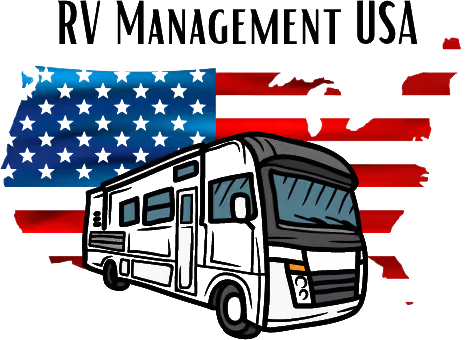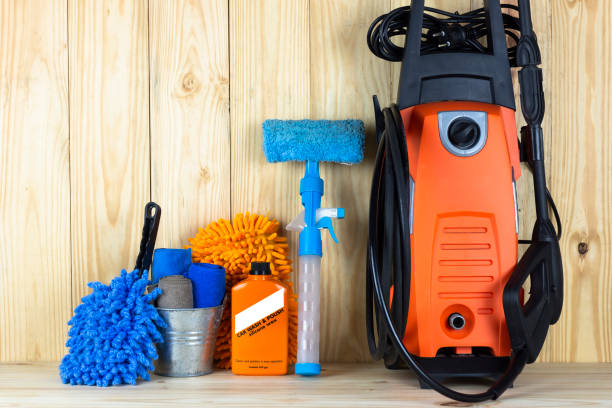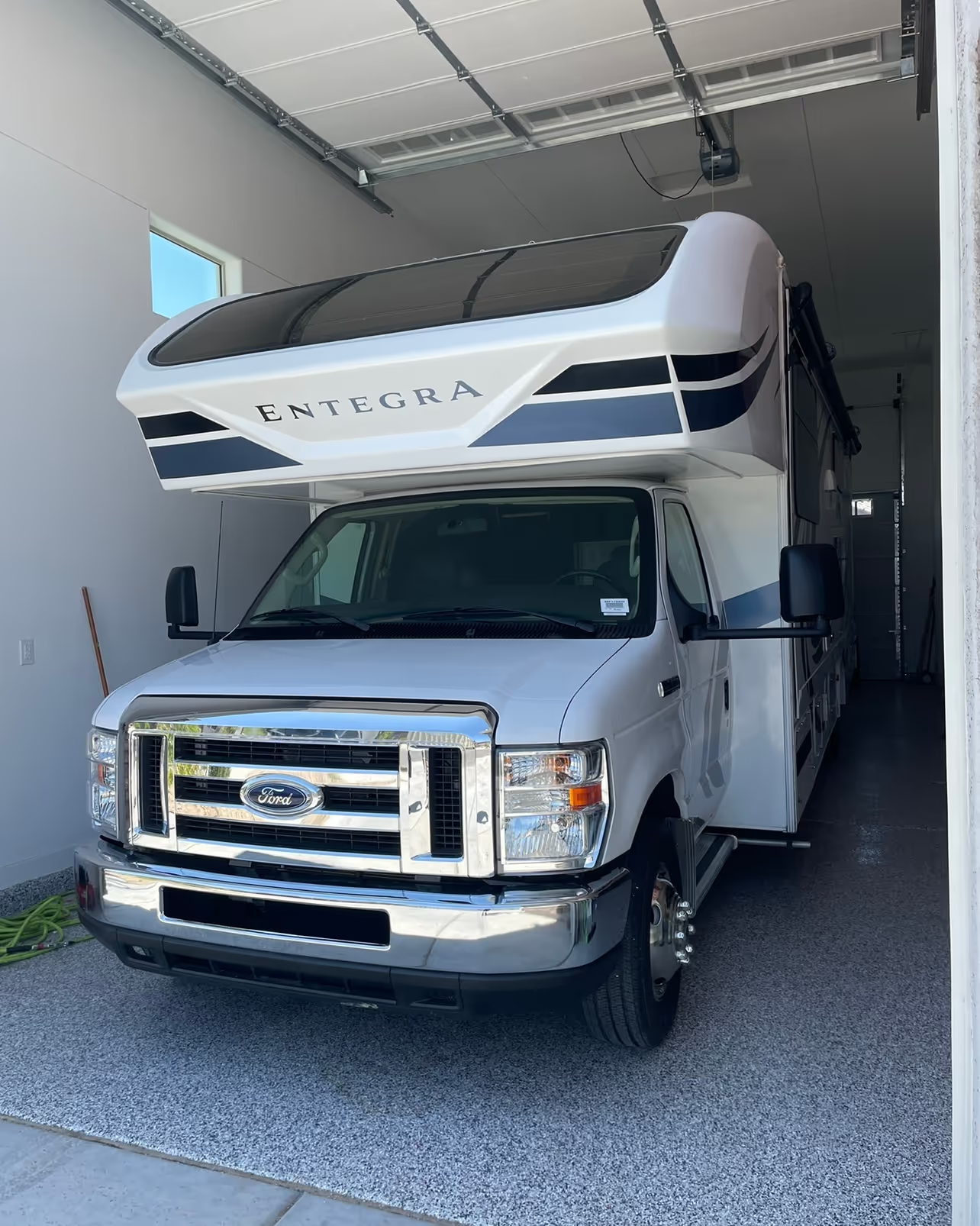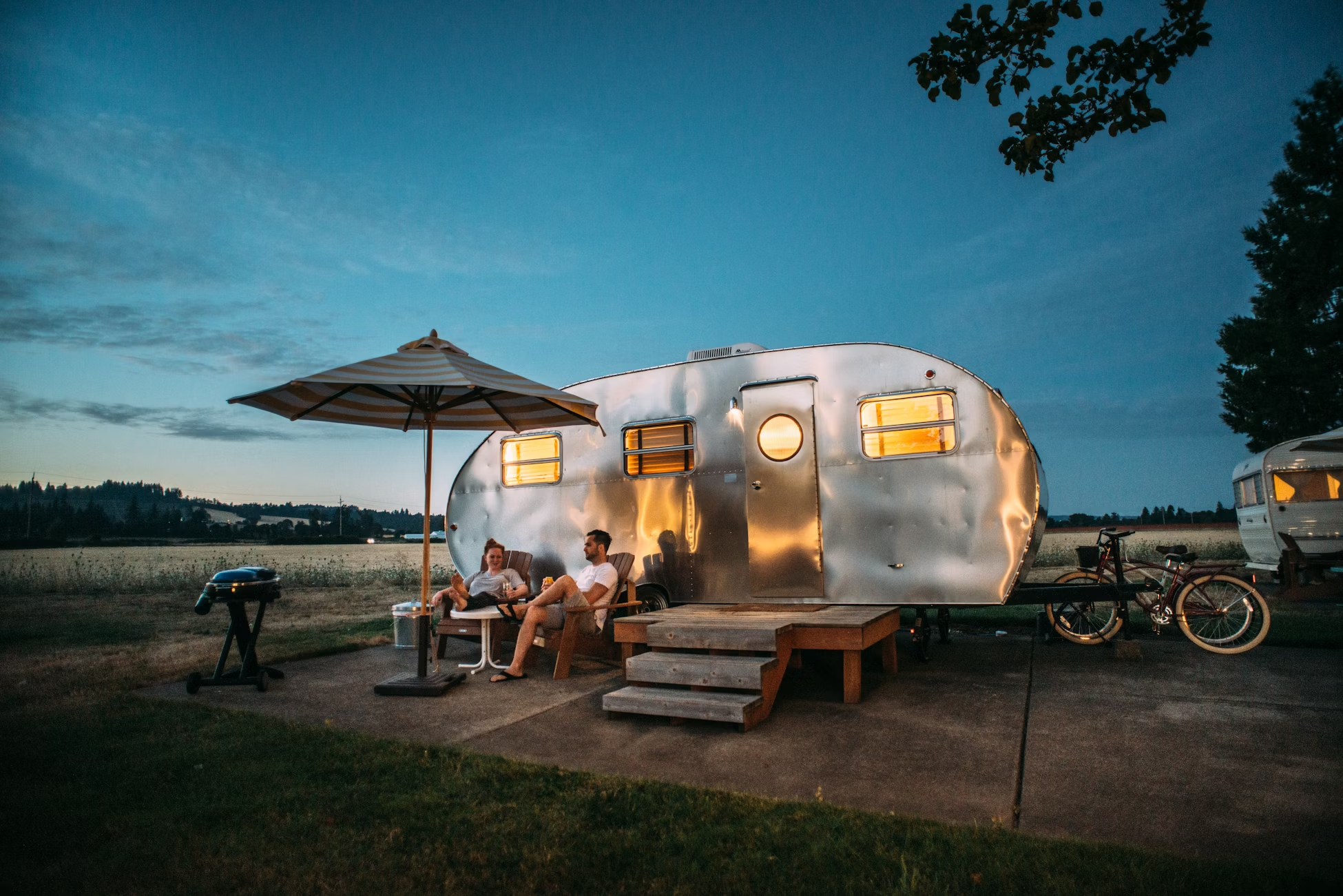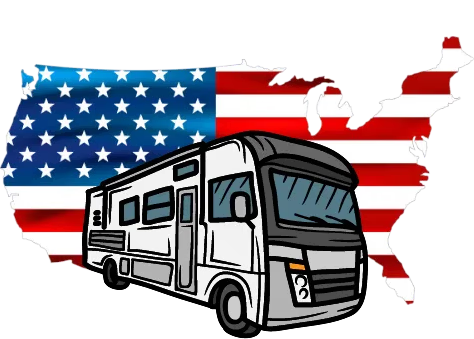When the air turns crisp and the campground fires get a little smokier, there’s something else creeping up on RV owners everywhere: winter prep.
And if you’re anything like most owners we talk to, the question always starts the same way:
“Wait… do I really need to winterize? And where do I even begin?”
Spoiler: Yes, you really do. Because skipping it—even once—can turn into a spring full of regret, repairs, and invoices you don’t want to see.
At RVM, we’ve helped hundreds of RV owners navigate the winterizing process. Some nailed it the first time. Others… well, they learned the hard way (and generously let us share their stories so you don’t make the same mistakes).
This isn’t just another checklist—it’s a real-world survival guide to protecting your RV investment from freezing temps, sneaky mice, mold, and more.
Table of Contents
- Why Winterizing Matters (and What Happens If You Don’t)
- Drain the Water—Yes, Every Drop
- Protect Your Plumbing: Antifreeze Isn’t Optional
- Shut It Down: Appliances, Batteries & Propane
- Seal It Up: Roof Checks & Exterior Prep
- Mice, Moisture & Mold: Winter’s Hidden Enemies
- The “Smell Test”: Clean Now or Regret Later
- Storage Options: Cover or Indoors?
- A Real Owner’s Story: The Frozen Pipe That Cost $1,600
- Spring Reawakening: How to De-Winterize Without Surprises
- Final Thoughts: A Weekend Now Saves a Season Later
1. Why Winterizing Matters (and What Happens If You Don’t)

Let’s start with this: skipping winterizing is like leaving a carton of milk in a hot car. You might not notice the damage right away—but when it hits, it really hits.
One RV owner outside Denver skipped winter prep “just this once” because the weather had stayed mild. Then a surprise cold snap dropped temperatures below freezing—and burst three pipes behind the walls. The final bill? $4,000 in repairs before spring even rolled in.
Winter doesn’t care if it’s your first season or your tenth. Protect your rig now—or be ready to open your wallet later.
2. Drain the Water—Yes, Every Drop
Start with your fresh water tank, then move to gray and black tanks. Don’t forget your water heater—but only after it’s cooled down. Finally, open all your faucets and low-point drains to get as much water out as possible.
RV owner Mark from Oregon swears by a $20 blowout plug and a portable air compressor:
“That little gadget pushed out water I didn’t even know was hiding in the lines. Saved me from a cracked hose two winters ago.”
Little things like this can make a huge difference.
3. Protect Your Plumbing: Antifreeze Isn’t Optional
Even after draining, there’s always a bit of water left in the lines. That’s where RV-safe antifreeze comes in. You’ll want to run it through every faucet, the toilet, the shower (don’t forget the outside one!), and even the drains.
One Minnesota couple thought draining was enough. By spring, their cracked toilet valve had leaked into the subfloor—causing soft spots that took $700 to fix.
A $5 bottle of antifreeze would’ve saved them that entire headache.
4. Shut It Down: Appliances, Batteries & Propane

Unplug and turn off everything. Defrost the fridge, prop open the doors, and make sure no food is left behind.
Jen, an RV rental owner in Utah, made a rookie mistake:
“I left a frozen burger in the freezer. Came back in April and the smell was horrific. Like, windows-open-for-a-week bad.”
Also: disconnect your batteries and store them in a dry place. Fully shut off your propane tanks. If you want your RV to “wake up” next spring without issues, it needs to take a proper nap now.
5. Seal It Up: Roof Checks & Exterior Prep
Take a walk around (and on top of) your RV. Check for cracked seals, loose vents, and gaps around windows. Reseal where needed with lap sealant or caulk.
A quick once-over now can save you from discovering water damage in April.
And don’t forget: vent covers, tire covers, and a breathable RV cover can help protect everything from UV rays to ice buildup.
6. Mice, Moisture & Mold: Winter’s Hidden Enemies
Your warm, cozy RV is a dream hideout for winter squatters. We’re talking rodents, mold, and all things gross.
Use steel wool to block gaps around wiring or vents. Drop DampRid in corners and cabinets. And here’s a fun tip:
Tom from Ohio has been using Irish Spring soap bars and dryer sheets for three years straight.
“I don’t know if it’s science or superstition, but I haven’t seen a single mouse since I started. Smells great, too.”
7. The “Smell Test”: Clean Now or Regret Later
Before sealing it all up, clean like your spring self will thank you.
- Strip the beds
- Wipe surfaces
- Vacuum corners
- Empty the fridge
Then toss in some baking soda for the fridge and vinegar in the drains to neutralize odors. You don’t want your RV to smell like a science experiment when you open it up.
8. Storage Options: Cover or Indoors?
Got indoor storage? Amazing. Use it.
If not, invest in a high-quality breathable RV cover (not a tarp!). Tarps can trap moisture and invite mold.
One RVer in Boise covered her Class C every winter with a fitted cover for three straight years:
“Zero fade, zero mold, and when I sold it, the buyer couldn’t believe the condition. That $300 cover paid off big time.”
9. A Real Owner’s Story: The Frozen Pipe That Cost $1,600
In 2022, Steve from Pennsylvania forgot one key step: opening the low-point drains.
“It was early November, and we figured we had time. Then a cold snap hit. The next spring, I found a burst pipe behind the shower wall. Water had leaked into the subfloor. One tiny mistake—$1,600 in damage.”
It takes minutes to open those drains. Don’t skip it.
10. Spring Reawakening: How to De-Winterize Without Surprises

When warmer weather finally hits, take it slow:
- Flush the antifreeze from your system
- Reconnect batteries
- Check seals, test appliances, inspect tires
- Refill tanks and inspect for leaks
Think of it like waking up a hibernating bear—you don’t just poke it and hope for the best.
11. Final Thoughts: A Weekend Now Saves a Season Later
Winterizing isn’t exciting. It’s not glamorous. But it’s essential.
Set aside a weekend. Make a checklist. Get the kids involved if you can (they’re great at finding missed snack wrappers).
Because when spring rolls around, you won’t be fighting mold or pipes—you’ll be planning your next trip.
Have questions about gear, storage, or winterizing a rental RV?
The RVM team is here with advice, checklists, and real-world examples from owners just like you.
We’re in this together—one season (and one smart prep job) at a time.
— The RVM Team
